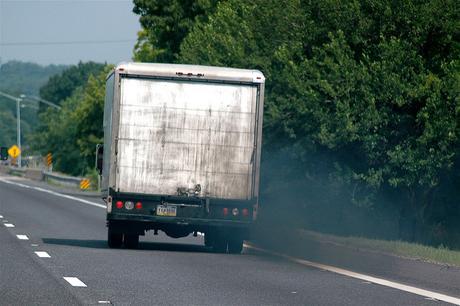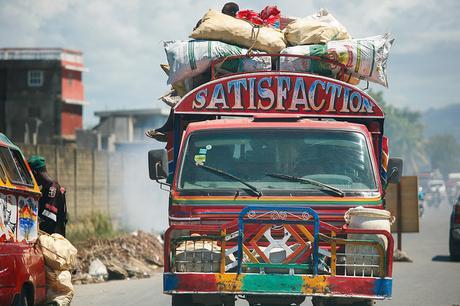30 Practical Ways To Cut Fuel And Energy Use And Allow The Natural Environment To Grow Again
This short article, presented in list form, is deliberately multi-tiered to help readers remind themselves of the important and urgent need to save as much energy as possible across the board. Reducing your overall carbon footprint, to ultimately help save their environment for your children and your children’s children is the goal. Emphasis has been placed on how better to use the car to help drive down excessive fuel use and promote efficiencies. But there are also healthier alternatives worth noting. Domestic fuel and energy consumption remains necessary but it’s also worth reminding readers of the importance of saving energy in the home as well.
Most of the suggestions given here have been sourced from the experts. And, most of the things that you can do to cut down on your fuel consumption are not complex tasks and do not require any further help from the experts. These are things you can do by yourself. Perhaps the best motivator that can be given to you is to think not just about how much fuel and energy is being wasted, but think about how much of this waste is burning an even deeper hole in your pocket.

Below are 30 easy and simple ways that can help you to save money in your pocket and the environment.
1. Do not idle – Long idling without turning off the car’s engine leads to the unnecessary and prolonged burning of fuel.
2. Get rid of unnecessary weight – Carrying extra cargo, particularly that which is not needed in transit, leads to the burning of more fuel.
3. Ensure regular maintenance of your vehicle – Variable components of your vehicle, not properly aligned during prolonged use, also leads to unnecessary excess fuel usage. Proper maintenance curbs this.
4. Make sure that tires are inflated at correct temperatures – Underinflated tires, for instance, reduces the economic use of fuel.
5. Fill up during coolest parts of the day – Gasoline is densest during these times.
6. Drive in cruise control on busy networks – This will help eliminate unnecessary accelerations and/or decelerations which negatively impact the vehicle’s fuel economy.
7. Always drive at designated speed limits – These legislated limits serve two purposes. They help save lives. And by default, adhering to designated speed limits positively contribute to fuel economy.
8. Communicate with fellow-drivers about fuel consumption awareness – The more that is known about the importance of saving fuel to help reduce carbon footprints that are going to help save the environment, the better chance there is in creating a cleaner and greener environment which is safer and pleasant for all living within it.
9. Use air conditioners sparingly – This is a luxury which can be discarded at the switch of a button. Only use air conditioners for its specific purposes, i.e. to cool both driver and passengers during days when temperatures are extremely high.
10. Park your vehicle in the shade – This can be linked to the use of air conditioners which no longer need to work as hard to produce cooling. It also helps to promote fuel efficiency because less gas will evaporate than when the vehicle is out in the sun.
11. Make full use of carpools – These serve multiple purposes and produce more than one benefit. It promotes social interactivity and helps reduce carbon footprint. There are less vehicles on the road during peak hours. It is also a great way to save expenditure on fuel.
12. Buy an energy-efficient vehicle – All leading manufacturers produce these alternatives and provide the vital information that shows evidence of its efficiency capabilities.
13. Think seriously about investing in an electric or hybrid vehicle – This is a better alternative but remains contentiously out of the range of most consumers who are constrained by their budgets. Include this mode of transport in your future long-term growth strategies.
14. Become fully aware of traffic conditions – Radio traffic reports are regularly supplied, so there is no excuse for avoiding traffic bottlenecks. Also, make full use of your GPS if you have this.
15. Drive sensibly and not aggressively – Sensible driving as opposed to the aggressive behavior drastically improves fuel efficiency. Aggressive driving leads to excessive use of fuel anyway.
16. Avoid uphill speeding – Uphill speeding is counterproductive and entirely unnecessary. The vehicle is already working at capacity to overcome steep gradients, so no amount of additional speed will make a difference.
17. Make use of public transport networks – This is still better than the carpool. There are even less cars on the road. Carbon footprints are reduced still further.
18. Cycle instead of driving – Still better, not only is no fuel or energy being used, you are becoming healthier.
19. Walk instead of cycling – Cycling is still traffic, so if your distance is reasonably short, it would be better to walk.

20. Plan your route before leaving: Before leaving from home or office, plan you route. Try to avoid heavy traffic areas or routes where construction is going on. Save money by not burning extra fuel and do your part in saving the environment.
21. Change Filters: Check your filters regularly – especially if you live in a dusty area. Clean filters help to keep cars running more fuel efficiently.
22. Turn off the engine: If you’re waiting on along and busy traffic light or waiting at a railway crossing or waiting for your friend outside his/her home, its better to turn off the engine and save some gas. Just keeping you car’s engine running even if it is not required, is nothing but sheer waste of money and increases your carbon footprint on the environment. Try to be environment-friendly and loop in your friends, relatives and colleagues and inspire them to do same so.
23. Work from home: If your company offers work from home facility, just avail it. It will not only reduce the amount of money you have to spend every day on gasoline but will also save the time you will spend on traveling.
24. Drive less: Drive less, whenever wherever possible. One of the way to drive less is to use your feet to move around that will help you save few bucks and also help you to get in shape. If you have to cross long distance, try walking or riding your bike rather than hopping in the car. Alternatively, look for public mode of transportation like bus or tube to get around the city. Not only it will help you save fuel but you can use that time to listen to your favorite music or read novel while traveling.
25. Clean out your trunk: Remove unnecessary items from your car that is just of no use. It won’t only make your drive pleasant but will also improve your gas mileage. Removing 100 pounds (45.4 kilograms) of weight from your car gives it a fuel economy boost of 1 to 2 percent.
26. Use correct motor oil: Make sure that you’re using the correct motor oil as required by your car. If you aren’t sire about it, just check the manual or do a quick search online. Using wrong motor oil not only reduces your fuel economy but also puts extra burden on the environment.
27. Apply brakes cautiously: Applying brakes excessively wastes gas and causes your brake pads to wear out quickly. Always keep appropriate distance between yourself and the car in front of you and you won’t find any need to apply brakes often.
28. Drive manual: Manual transmission cars are more fuel-efficient than automatic transmission. If you drive a car with automatic transmission, use cruise control to manage your speed and conserve fuel.
29. Tune up: Take your car to the nearest service station and get the engine tuned up. A properly tuned engine uses less gas, saves fuel and also reduces the likelihood of repairs.
30. Keep windows closed: Keep your windows closed whenever possible. An open window increases drag and costs you fuel in the long run.
With greater focus on promoting healthier and safer lifestyles, readers have been made aware of the need to help the environment. Remember that a healthier environment promotes personal well-being too. This is because the air that they breathe remains highly toxic from non-sustainable means of industrial production. Pertinently, in the context of this listed guide, they remain vulnerable to the excessive and unnecessary consumption of car fuel.
And just a quick calculation reveals just how much you can save when you cut fuel and energy use and harmful, life-threatening habits. Not only do you save the environment, you save lives too. And while you’re saving both the environment and lives, you’re saving money and paving the way for a more sustainable and economical future.


posted on 09 May at 04:42
Sorry, but some of the statements are "out-of-date" - they turn out to be untruth and therefore useless and even damaging. Please publish a correction. Sincerely, Michael